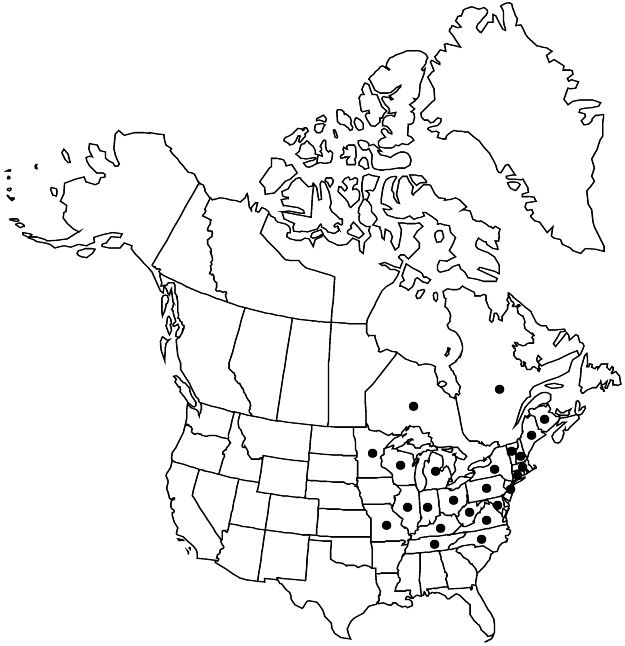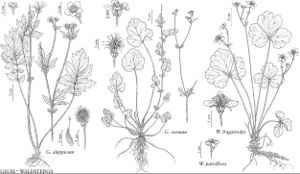Waldsteinia fragarioides
Rosac. Monogr. 3: 107. 1823.
Herbs, 10–20 cm. Leaves mostly ternately compound, rarely merely deeply lobed; leaflets broadly cuneate-obovate, 3–5 cm, lateral ones ± asymmetric, margins commonly shallowly and irregularly lobed, surfaces sparsely strigose, principal veins often densely strigose. Inflorescences 3–8-flowered. Flowers 14–20 mm diam.; hypanthium obcampanulate, 2–4 mm, externally strigose or glabrous; petals obovate to broadly elliptic, 3.5–10 mm, much longer than sepals, apex obtuse or rounded; carpels 3–5.
Phenology: Flowering Apr–May.
Habitat: Moist or dry hardwood forests or mixed conifer-hardwood forests
Elevation: 0–600 m
Distribution

N.B., Ont., Que., Conn., Ill., Ind., Ky., Maine, Md., Mass., Mich., Minn., Mo., N.H., N.J., N.Y., N.C., Ohio, Pa., Tenn., Vt., Va., W.Va., Wis.
Discussion
Waldsteinia doniana is usually synonymized with W. parviflora; according to M. L. Fernald (1935) it is based on an aberrant cultivated form of W. fragarioides. Waldsteinia fragarioides and W. parviflora are often combined, then often distinguished as varieties. The flower size of W. fragarioides is very variable, and it seems that larger flowers are more usual in the north of the range. The best differentiator from W. parviflora is sepal length relative to petal length, and all specimens with adequate material seen by the author were distinguishable. Waldsteinia fragarioides is used as a mat-forming groundcover in ornamental horticulture.
Selected References
None.
Lower Taxa
"thin" is not a number.
